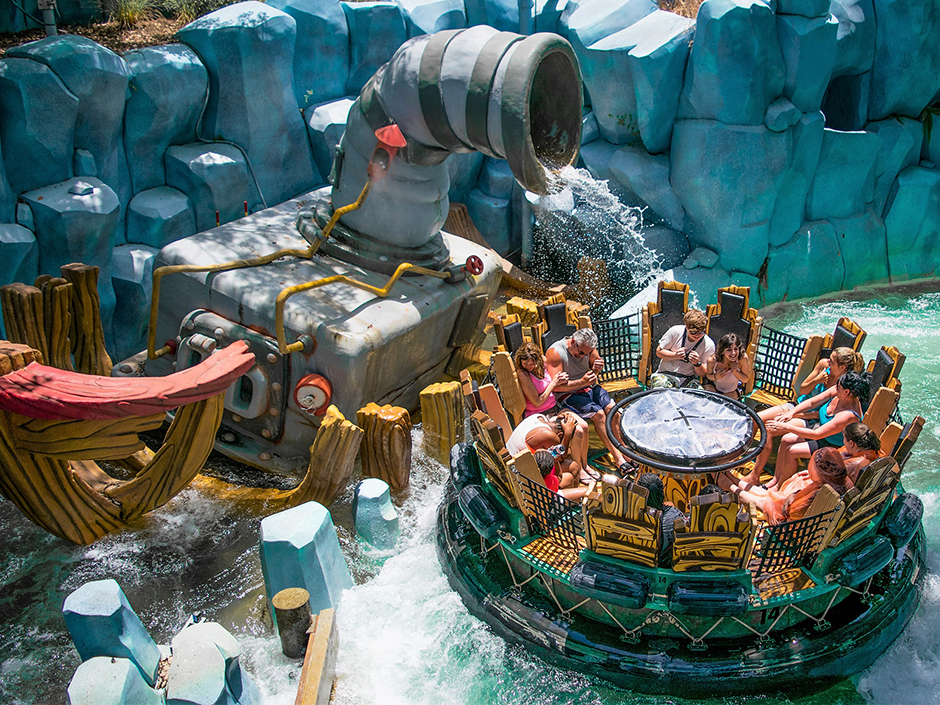Waterparks offer a realm of exhilaration, where water cascades, splashes, and surges in ways that captivate visitors of all ages. From the thrilling descents of water slides to the soothing flows of lazy rivers, each attraction is crafted to provide an unforgettable adventure. However, beneath the enjoyment and excitement lies a complex interplay of science and engineering.
In this article, we will explore the physics and engineering concepts that underpin the waterpark attractions we cherish. From the mechanics of water slides to the innovations that enhance wave pools, let us examine how physics contributes to the enjoyment of these experiences.
1. The Physics of Water Slides: Speed, Gravity, and Friction
At the core of every exceptional water slide is a meticulously balanced interaction of forces—gravity, friction, and acceleration.
Gravity serves as the fundamental force propelling water slides. When you ascend to the top of a slide, you accumulate potential energy. As you launch yourself down the slide, this energy transforms into kinetic energy, causing you to accelerate as you descend. The incline of the slide directly influences the conversion of potential energy, resulting in increased speeds.
Friction is a crucial factor in determining your velocity. The materials of the slide, the water, and your body all contribute to friction. Water acts as a lubricant, minimizing friction and facilitating a smoother, quicker descent. However, insufficient water can lead to increased friction, slowing you down and diminishing the enjoyment of the ride. Conversely, excessive friction may result in uncomfortable sensations.
Curve Design: Engineers strategically incorporate curves to amplify the excitement. As you navigate a curve, the water slide exerts centrifugal force, creating the sensation of being pushed outward. The sharper the curve, the more pronounced the feeling of being “thrown” through the air. In extreme instances, the design can induce a near-weightless sensation—consider rides like the “Kamikaze” slides, where you experience a sudden drop accompanied by intense G-forces.
2. Hydrodynamics: The Flow of Water
Water is an essential component of all waterpark attractions, yet the dynamics of its flow are more intricate than they may seem. The field of hydrodynamics, which examines the behavior of fluids in motion, is vital in ensuring that rides are enjoyable, secure, and efficient.
Water Flow in Slides: Engineers meticulously determine the precise volume of water required for a slide to achieve optimal speed—fast enough for excitement, but not excessively so. The water level on the slide is carefully calibrated, as it significantly influences the rider’s experience. Insufficient water can lead to increased friction, resulting in a rough ride, while an excess can cause the rider to lose control.
Water Currents in Lazy Rivers and Wave Pools: For more leisurely attractions like lazy rivers, a gentle current is established through pumps that circulate the water in either a circular or linear fashion. The flow rate is intentionally designed to provide a soothing movement for riders without propelling them too swiftly.
Wave Pools: In wave pools, the principles of hydrodynamics are applied on a larger scale. Large mechanical paddles or pneumatic pumps are employed to create waves by pushing and pulling the water. The dimensions, frequency, and intensity of the waves are meticulously engineered according to the pool’s size and water capacity. Some state-of-the-art wave pools, such as those found at Typhoon Lagoon in Disney World, can replicate authentic ocean waves!
Engineering Marvels: Safety and Innovation in Design
Waterparks are crafted not only for enjoyment but also with a focus on safety and innovation. Each ride undergoes rigorous testing and engineering processes to guarantee rider safety while delivering an exhilarating experience.
Structural Engineering: The design of a water slide or attraction must accommodate the weight and forces exerted by riders. This necessitates the use of robust materials such as fiberglass and steel, which are resistant to corrosion from continuous water exposure. Additionally, slides are engineered to withstand significant loads, particularly for multi-rider attractions or those with substantial water flow.
Safety Features: Waterparks implement advanced engineering strategies to ensure safe riding experiences. For example, safety measures are integrated into the design to protect riders while enhancing their enjoyment.
